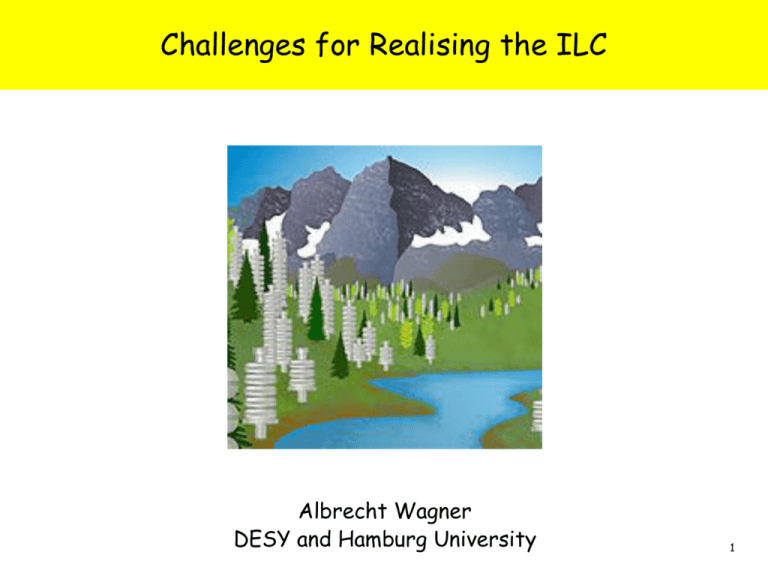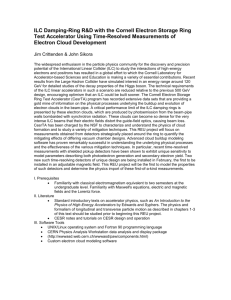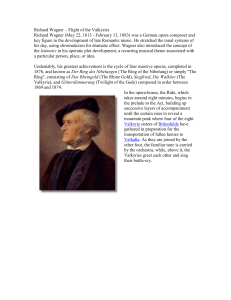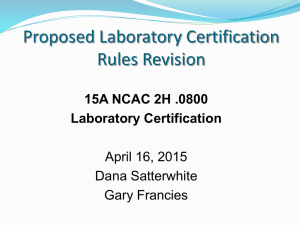Albrecht Wagner - International Linear Collider
advertisement

Challenges for Realising the ILC Albrecht Wagner DESY and Hamburg University Albrecht Wagner, Snowmass 0805 1 Models for International Projects - HERA Accelerator was built with help (manpower) and contributions (hardware) of Italy, France, Poland, China Experiments were build by large international collaboration Operation cost are shared Operation is paid by Germany Became known as ‚HERA model‘ Albrecht Wagner, Snowmass 0805 2 The Large Hadron Collider proton-proton collider, under construction in the LEP tunnel (27 km circumference) first luminosity in 2007 Accelerator and experiments built with substantial international contributions, well beyond CERN member states CERN as host is an international organisation Albrecht Wagner, Snowmass 0805 3 The International Linear Collider • Many reasons speak for a truly global project: – Necessary funding – Scientific challenges – Political climate concerning basic research – Big time gaps between new projects • Many steps have been taken in this direction: – Scientific consensus – Technology choice – World-wide organisation of accelerator work – World-wide organisation of detector work – OECD – Funding agencies • Many challenges lie ahead Albrecht Wagner, Snowmass 0805 4 The Scientific Case for a LC From ‘Discovering the Quantum Universe’: ‘Discovering the Quantum Universe’ illustrates very clearly, that from a scientific point of view the scientific case for the ILC is very strong and does not need results from the LHC as justification. This needs to be distinguished from possible other boundary conditions Albrecht Wagner, Snowmass 0805 5 Successful Start of the Global Design Initiative Impressive progress and convergence Albrecht Wagner, Snowmass 0805 6 European Activities on ILC-related Matters • • • • TESLA Technology Collaboration (very international) TTF and VUV-FEL (now running as user facility) European XFEL (in detailed planning stage) CLIC R&D European Union support (funding presently until 2007) • CARE: Coordinated Accelerator Research in Europe • EuroTeV: ILC related accelerator programme • EuDet: LC detector development new The total European resources for ILC R&D over the next 3 years is ~100M€, of this ~ 25 M€ are fresh money from the EU. • National programmes (e.g. UK LC accelerator and beam delivery) Albrecht Wagner, Snowmass 0805 7 TESLA Technology Collaboration Taking into account all recent developments (XFEL, ILC) the TESLA collaboration has redefined its mission and has changed its name in to TESLA Technology Collaboration. The mission: - advance SCRF technology research and development and related accelerator aspects across the broad diversity of scientific applications, - keep open and provide a bridge for communication and sharing of ideas, developments, and testing across projects. The collaboration will support and encourage free and open exchange of knowledge, expertise, engineering designs, and equipment. - KEK and SLAC have joined TTC - other labs have stated that they want to join Albrecht Wagner, Snowmass 0805 8 European Funding for ILC R&D Structured and integrated European area in the field of accelerator research and related R&D. 3 Networking Activities and 4 Joint Research Activities. Albrecht Wagner, Snowmass 0805 European Design Study (27 institutions, including CERN and DESY) With top marks (score: 4.8/5), EU funding: ~9 M€ 9 EU and the ILC Project The European Union is thinking about a stronger role in research infrastructure • The evaluators of the ILC design study EUROTeV emphasised the importance of the project • EUROTeV plays the role of a focus and nucleus for the European part of the global activities • Global projects represent a new challenge for European science coordination • The ILC is one of the possible domains for the strategic road map Albrecht Wagner, Snowmass 0805 10 European Industrial Forum on SC RF In discussions with companies which have already provided components for TTF the idea emerged that it might be useful to create a European Superconducting RF Forum Kick-off meeting took place at DESY on 7/8 April 2005, attended by ~ 100 participants from more than 40 companies and institutes. A similar forum exists in Japan for the ILC Also in the US such a forum has been organised. Albrecht Wagner, Snowmass 0805 11 Steady Progress towards the ILC 2001 2002 2003 2004 2005 • Road map discussions in the three regions, leading to a consensus about scientific priorities • Science Council evaluation of TESLA in Germany • First meetings of the funding agencies (FALC) • Consultative group of OECD • OECD Ministerial Statement supporting the ILC • Decision on technology • First ILC workshop • FALC establishes a Resource Group • ICFA appoints director for Global Design Effort • Regional directors • EPP2010 panel in the US • 2nd ILC workshop • Start of convergence towards BCD This list is incomplete, but illustrates the steady progress Albrecht Wagner, Snowmass 0805 12 Structural Issues to be addressed • Which is the best structure for an international project? • How and why should the labs which participate in the construction be involved in the operation? • How to guarantee a long term project stability • Does it require a international organisation with treaties? • Understand the balance between host and non-host regions • When and how should the site choice be made? • What can we learn from ITER? Albrecht Wagner, Snowmass 0805 13 The Global Situation • • Today’s map of labs running major particle physics facilities This picture will change significantly by the end of the decade • ICFA will address the question of how to face the long term future of the field in the upcoming seminar at Daegu (Korea) Albrecht Wagner, Snowmass 0805 14 A Road Map for the Energy Frontier Tevatron HERA LHC S-LHC ILC CLIC, Muon collider, other technologies ? 2005 2010 Albrecht Wagner, Snowmass 0805 2015 2020 15 Summary • The scientific case for a Linear Collider is strong and convincing, a world consensus exists on its importance • Several bodies have positively reviewed or are reviewing the case for an ILC • Europe has always demonstrated a strong dedication to the ILC • National programmes and the EU provide substantial funding • The European XFEL will be of major importance for the ILC (e.g. industrialisation, construction, commissioning) • Politicians are following the process (technical decision, joint global design, self-organisation,..) • A lot of challenging questions lie ahead Albrecht Wagner, Snowmass 0805 16








